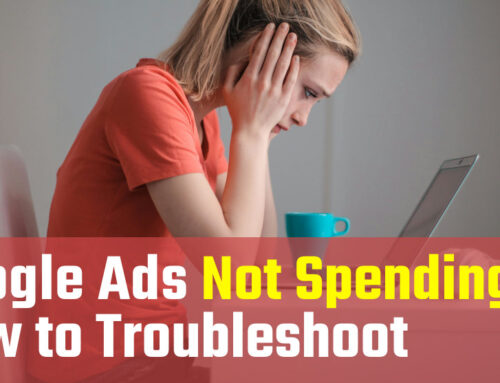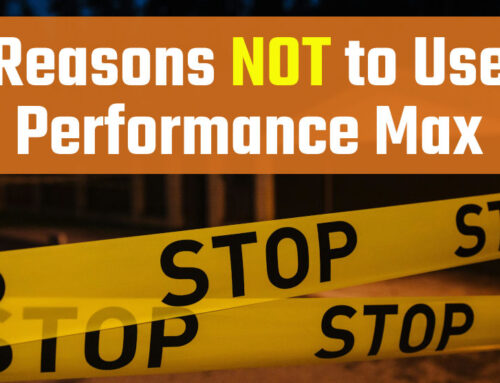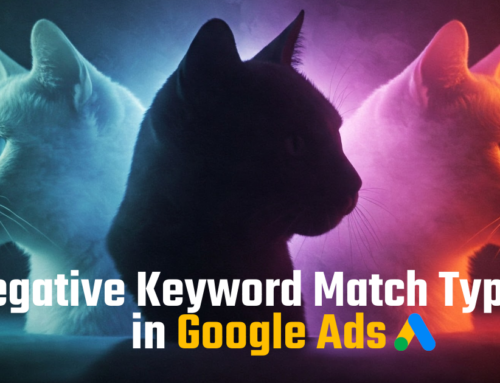If you’re comparing a Performance Max vs. Search Campaign in Google Ads, there are a few things to consider.
Google Performance Max campaigns were introduced in 2021 as an AI-powered alternative to traditional search and display ad campaigns in Google Ads.
For many businesses, the most attractive benefits of Performance Max campaigns are simplicity and automation. These campaigns are relatively easy to set up. Then, Google uses machine learning to run the ads in front of the right people, at the right time.
That’s the idea, anyway.
But while Performance Max does offer advantages for some advertisers, it’s not for everyone.
Here’s what you need to know.
What is Performance Max?
Google Performance Max is a type of online advertising campaign within Google Ads. These campaigns use machine learning to determine when and where to place ads across many different channels. Ads can appear in search results, YouTube, Gmail and across the massive Google Display Network.
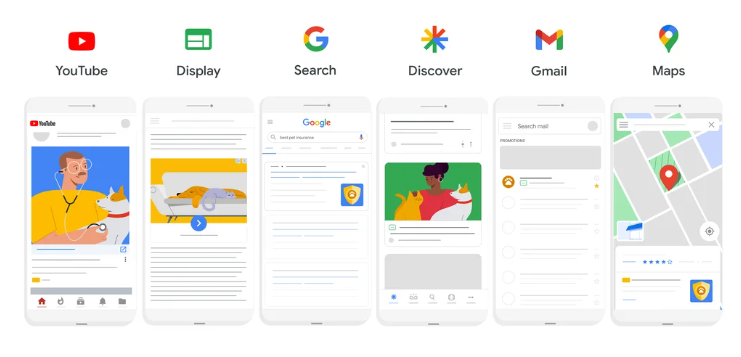
Image courtesy of Google
Should you use Performance Max Campaigns?
It depends on your goals. Performance Max is best for businesses that want to extend their budget beyond search to deliver their ads to more people, even if those people aren’t actively searching for the business’s products or services.
For businesses that want every ad dollar to go toward people who are actively searching for their offerings, right at that moment, then Performance Max is not a good fit.
Why we care?
As a Google Ads Management company that primarily helps small businesses, we typically do not recommend using Performance Max ads.
The reason is that most businesses will experience better results and conversion rates using Search campaigns.
This may come as a surprise to some businesses. Lately, we often see other Google Ads agencies pushing PMax campaign as if it’s a game-changing way to maximize performance. It’s not.
Our approach vs. other Google Ads management agencies
Those same agencies will talk about “spending millions of dollars on Performance Max campaigns” — but that is the key difference between our approach and theirs. Those agencies earn a hefty percentage of those advertisers’ massive ad budgets, so it’s in their interest to push their clients to PMax, where there’s virtually no ceiling for how much you can spend.
At MarlinSEM, we work with smaller businesses that have budgets as low as $1,000 a month or even less. They don’t want a single wasted click (which is PMax is notorious for). As their Google Ads expert, I would never suggest they suddenly move that budget to display channels, where the conversion rates are much lower.
(Some exceptions do apply, of course. For example, if the goal is brand development and name recognition, then PMax might be a good fit. This is why it depends on the advertiser’s goals. More on this in a moment.)
Google Performance Max vs. Search Campaigns: What’s the Difference?
The main difference is that Search campaigns show your ads to people who are actively searching for your keywords, whereas Performance Max can show your ads all over the Internet, even if people haven’t searched for what you offer.
Example of Performance Max Ads vs. Search
Let’s say you’re running Google Ads for a limousine company. Here’s an example of how your ads might appear depending on whether you’re using a Google Ads Search campaign or Performance Max campaign.
Search Campaign Example
- If you’re targeting keywords related to “limo company,” it will trigger your ad to appear in search results only when someone searches for those terms.

Performance Max Campaign Example
- If you’ve entered the term “limo company” as a search theme or signal in your PMax campaign, then your ads might appear in search results when someone searches for similar terms. However…
- Your ad may also appear on other websites, in gaming apps, in people’s Gmail inboxes and elsewhere, regardless of whether the user has actively searched for a limo company at all.
- Google will try to display your ad to users it thinks matches your target audience, based on user behavior data and other factors. But that’s not an exact science. Many people will likely have no need for a limo company but will see (and maybe click) your ad anyway, wasting your ad budget.
- For example, Google might use data about a user’s income, location and habits to determine they fit the right demographic. Then, your ad might show up in the middle of that person’s Candy Crush game.
When NOT to use a Google Performance Max ad campaign
Don’t use Performance Max if you only want your ads to be clicked by people who are actively searching for the keywords related to your business.
Think of it this way…
Let’s say you are advertising your limousine services. But you only have a budget of $3. (Yes, just 3 bucks.)
A single click on your ad might cost you $3.
Would you prefer that click be from someone who is actively searching for a limo company, right at that moment? Or, would you want to take a gamble and display your ad somewhere else on the Internet with the hope that a person will click it?
Which click is more likely to convert into an actual phone call or limo booking?
The Search ad, right?
Now, even if your ad budget is $5,000, $10,000 or even $20,000 a month – wouldn’t you want all of these clicks to come from active searchers, rather than clickers that don’t convert as often?
Average conversion rates for Google Performance Max campaigns
The average conversion rate for Google Performance Max campaigns across all industries is about 1.5%, according to the latest available data. But conversion rates are influenced by numerous factors, including industry, conversion type and landing page content.
The average conversion rate for Google Ads Search campaigns is about 3.5% — more than double the rate of Performance Max campaigns.
This is why we typically recommend Google Search ads instead of Performance Max campaigns for most businesses, especially when their budget is limited.
When SHOULD you use Performance Max?
Advertisers should consider Google Performance Max campaigns only when they want to reach their prospective audience beyond search results and/or when conversion rates are not a top priority.
For example, here are a few scenarios in which we might recommend PMax:
- If the advertiser is already reaching the maximum number of potential prospects in search results based on available search volume and has additional budget to reach more people in other channels.
- If the advertiser wants to build brand recognition or simply get in front of more people who may be interested in what they offer (even if they’re not searching for it with traditional keywords).
- If the advertiser wants to reach or build its audience through the channels that those prospects already use, such as Gmail, mobile apps, YouTube and other websites.
Benefits of Performance Max campaigns
For businesses with the right advertising goals (see above), Performance Max can offer several benefits:
- Automation: Google uses machine-learning technology to deliver your ads where they are likely to make the biggest impact. Advertisers maintain some control over where ads can (and can’t appear), but otherwise everything is automated.
- Simplicity: Performance Max Google Ads are relatively easy to set up and manage because the campaigns are heavily automated. This makes PMax a good fit for advertisers who have larger budgets but don’t have the time or patience to manually figure out the best placements.
- Display conversion rates: Performance Max typically delivers better conversion rates than traditional Display ads, because the PMax ad placements are optimized by AI.
- Best of both worlds (search + display): Performance Max combines the effectiveness of Search ads with AI-powered Display ads. Advertisers who have goals that justify the use of display ads (see above) will usually experience better results with a Google Performance Max campaign than with a combo of traditional Search and Display.
What are the disadvantages of Performance Max campaigns?
The biggest disadvantage of Performance Max campaigns is that ads are shown to people who may have no interest in what the advertiser offers. This has the potential to waste a significant portion of the advertiser’s budget. Often, that money is better spent in a traditional Search campaign.
While Google’s machine-learning technology is increasingly good at identifying relevant audience segments, unwanted and wasted clicks are still to be expected with PMax ads.
Conclusion
Google Performance Max is not recommended for clients with limited budgets who only want to reach people who are actively searching for their products. However, for clients with excess budgets or brand development goals, Performance Max offers several benefits, including automated targeting and ease of campaign setup.
Our take: Contrary to its name, PMax ads do not always mean maximum performance. For most small businesses we work with, in which every ad dollar matters, we strongly recommend using Search campaigns instead of Performance Max to get the best results.
Frequently Asked Questions about Google Performance Max
1. What is a Performance Max campaign?
Performance Max is a type of ad campaign within Google Ads that uses machine learning to reach a business’s target audience across several channels, including search results, YouTube, mobile apps and the Google Display Network.
2. Is Google Performance Max any good?
Performance Max is a good choice for advertisers who want to reach audiences in more channels than search results alone. Performance Max works best for advertisers with surplus budgets who want to build recognition among users that Google determines to be a relevant audience.
3. What is the minimum spend for Performance Max campaigns?
Like all Google Ads campaign types, there is no minimum required ad spend to run a Performance Max campaign. However, the average cost per click (CPC) for PMax ads, across all industries, is about $0.65. Numerous factors can influence CPC, including competition from other advertisers.
Need help? Not sure which Google Ads campaign is best for your needs?
Contact our experts at MarlinSEM. Request our pricing for a quick overview, or email Mike Marlin at mike@marlinsem.com.
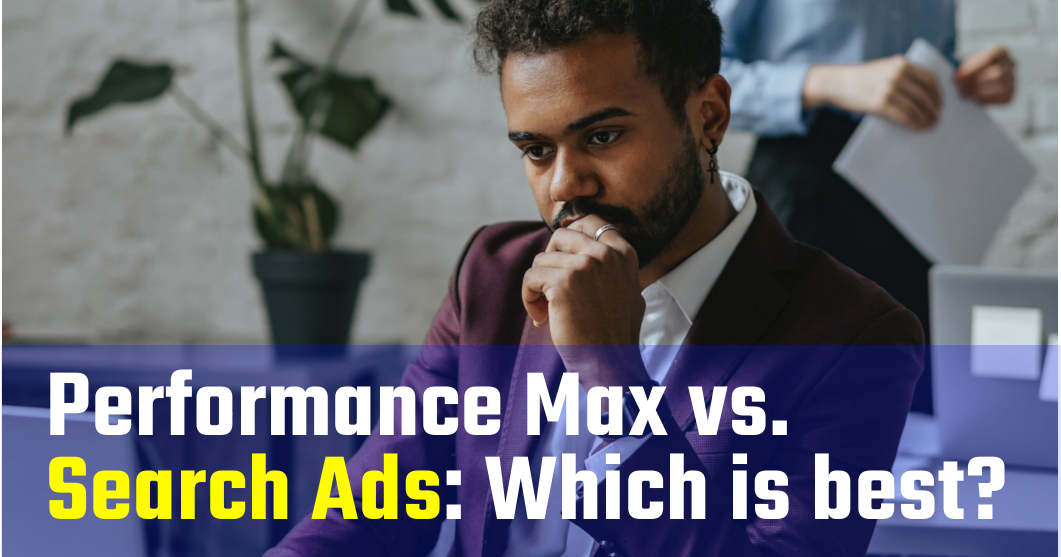

![How to Use Google Ads for Limo Services [Updated 2025]](http://marlinsem.com/wp-content/uploads/2024/01/limo-company-advertising-google-ads-2025-500x383.png)


